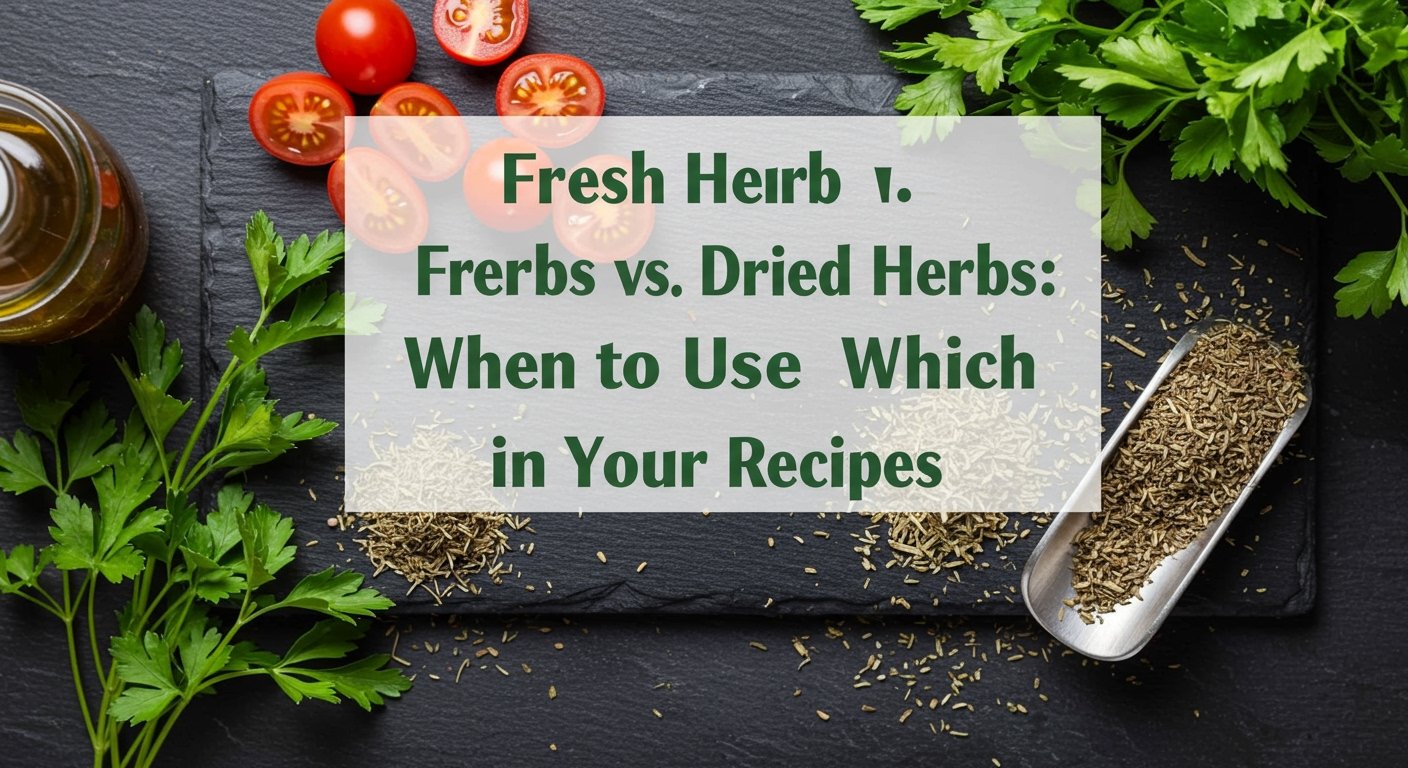Welcome, budding home chefs! Diving into the world of herbs can be both exciting and a little confusing. One of the most common questions is about fresh vs dried herbs: when should you reach for a vibrant sprig of basil, and when is a pinch of dried oregano the better choice? Understanding the difference between fresh and dried herbs is key to unlocking incredible flavors in your cooking. This guide will demystify the art of using fresh and dried herbs, helping you make the best choice every time.
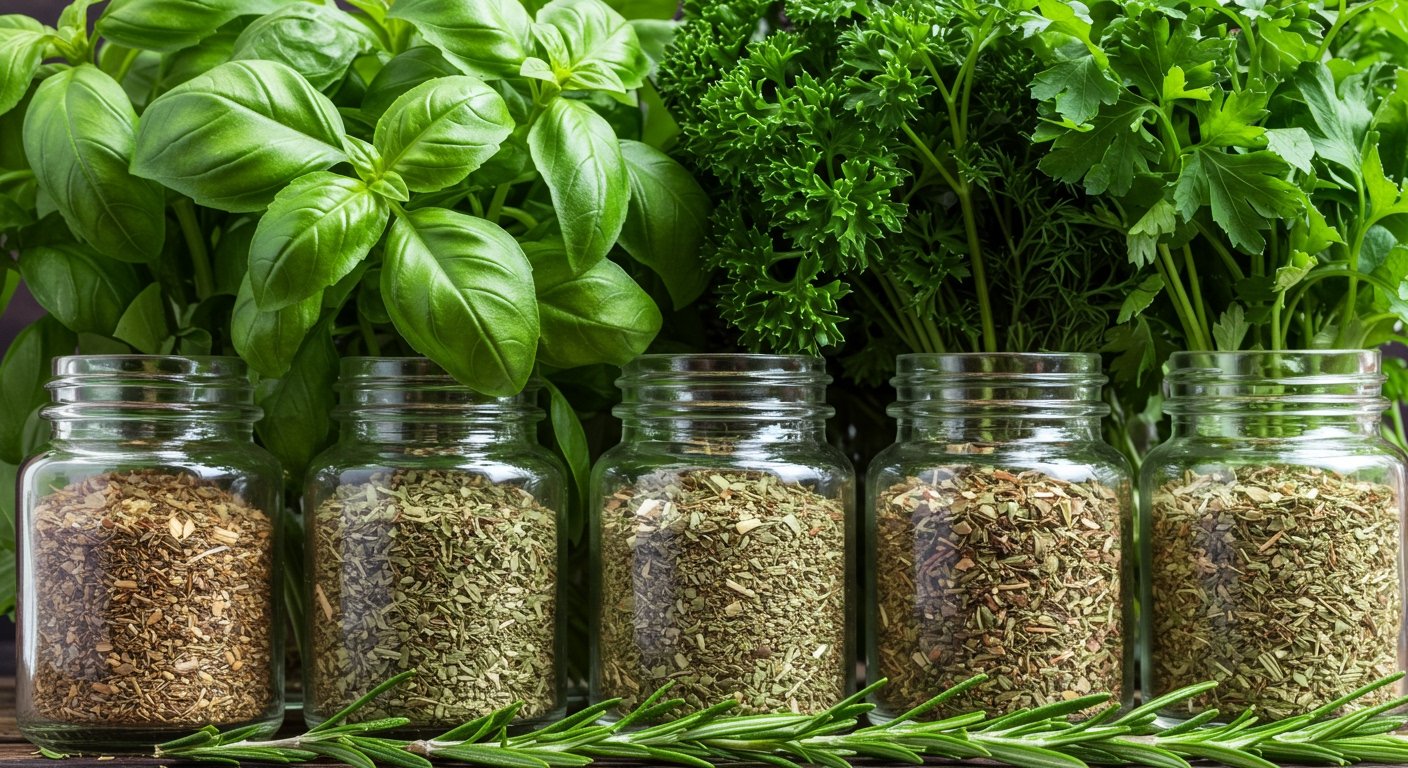
Herbs are the backbone of many cuisines, adding aroma, depth, and a touch of magic to even the simplest ingredients. Whether you’re growing your own herbs at home (Your First Herb Garden: Grow Herbs Indoors) or picking them up at the grocery store, knowing their characteristics will transform your culinary creations.
The Core Difference: Potency and Flavor Profile
The most significant difference between fresh dried herbs lies in their water content and, consequently, their flavor concentration and potency. Fresh herbs are, as the name suggests, fresh from the plant, full of water, and bursting with vibrant, often delicate aromas. Dried herbs, on the other hand, have had their water removed, which concentrates their essential oils and intensifies their flavor. This makes them much more potent than their fresh counterparts. [1]
Potency of Dried vs Fresh Herbs: The Golden Rule
As a general rule of thumb, dried herbs are about three times more concentrated than fresh herbs. This means if a recipe calls for 3 teaspoons of fresh herbs, you would use just 1 teaspoon of dried herbs. [Data 1] This `fresh herb to dried herb ratio` is crucial when you `substitute fresh for dried herbs` to avoid overpowering your dish. For example, when considering `how much dried herb for fresh`, remember this 3:1 ratio (3 parts fresh to 1 part dried) for most common applications. [3]
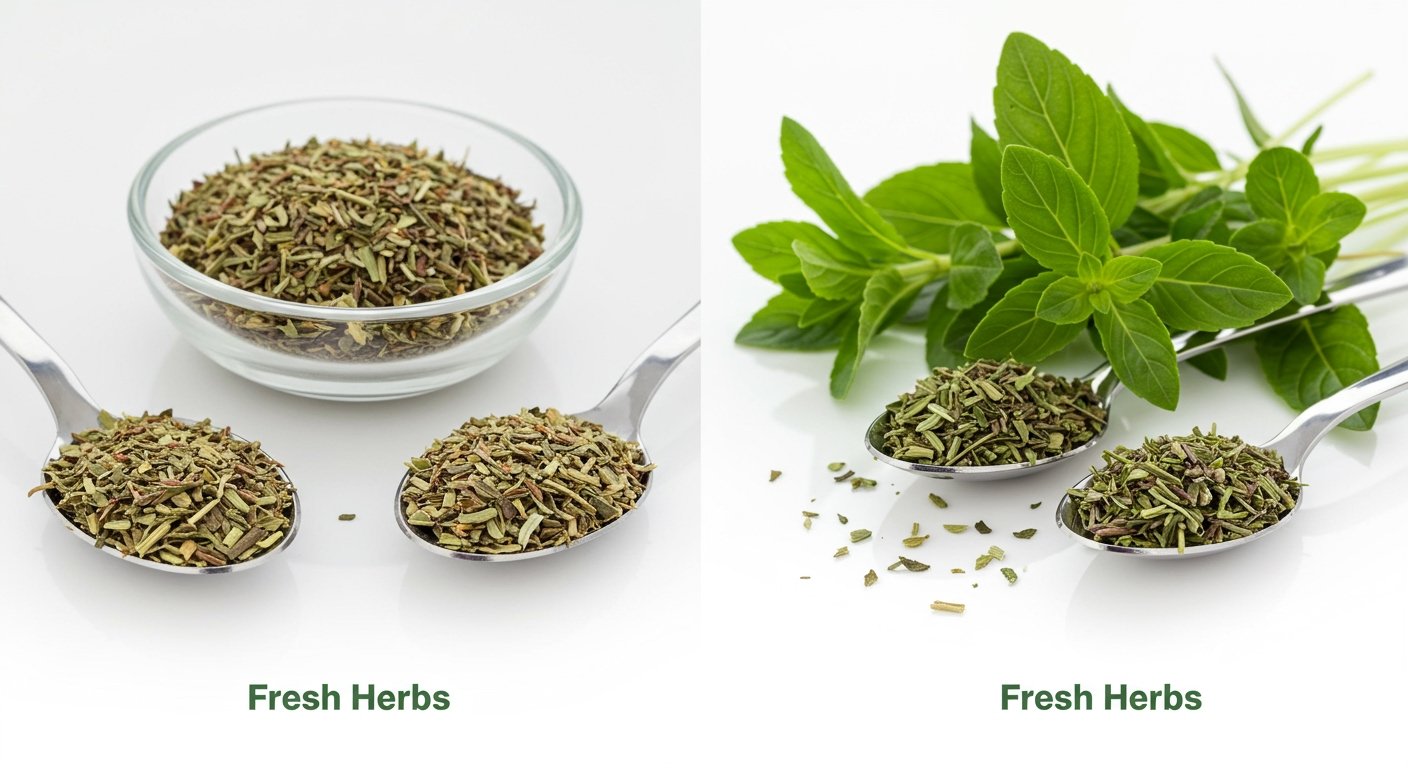
When Should You Use Fresh Herbs Versus Dried Herbs?
Deciding `when to add dried herbs` and `when to add fresh herbs` often depends on the type of dish and the desired flavor intensity.
Cooking with Fresh Herbs: Brightness and Finish
Fresh herbs are often preferred for their bright, nuanced, and sometimes peppery or citrusy notes. They are ideal for dishes where their delicate flavors can shine without being cooked down too much. Think of them as a finishing touch or a primary ingredient in uncooked preparations. [3, 7]
- Best for cold dishes: Fresh herbs are typically best for cold foods like salads, pesto, guacamole, and salsas. Their vibrant colors and textures also add visual appeal. [Data 5]
- Added at the end of cooking: To retain their delicate flavors and aromas, fresh herbs are generally added at the very end of the cooking process, or as a garnish right before serving. This prevents the heat from destroying their volatile oils. [3, 10]
- Herbs that truly shine fresh: Examples of `best fresh herbs for cooking` include basil (especially for pesto or Caprese salad), cilantro, parsley, chives, mint, and tarragon. For instance, `fresh vs dried basil` is a classic example where fresh basil’s sweet, peppery notes are far superior in many dishes than its dried counterpart. [3, 4]
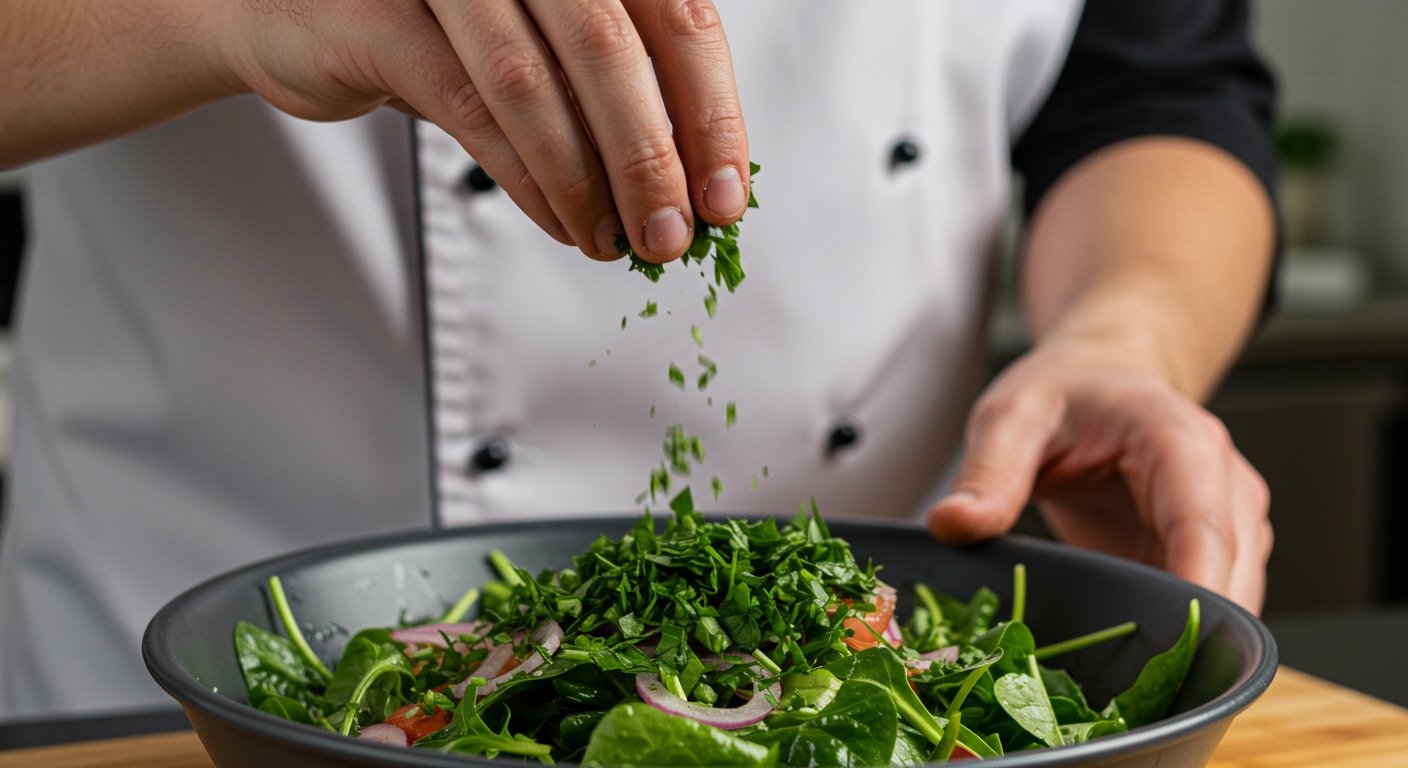
Cooking with Dried Herbs: Deep Flavors and Longer Cooking Times
Dried herbs, with their stronger and deeper flavor, work exceptionally well for cooked meals, especially those that simmer for a longer duration. The drying process may alter some of the nuanced flavors, but it often concentrates the earthy, robust notes that stand up well to heat. [1, 3]
- Best for cooked dishes: Dried herbs are perfect for sauces, soups, stews, casseroles, marinades, and braises. They release their flavors slowly over time, infusing the entire dish. [Data 5]
- Added earlier in cooking: Unlike fresh herbs, dried herbs benefit from being added earlier in the cooking process. This allows them ample time to rehydrate and release their concentrated flavors into the dish. [2, 3]
- Herbs that dry well: The `best dried herbs for cooking` are typically those with heartier leaves and robust flavors, such as oregano, thyme, rosemary, bay leaf, and marjoram. `Fresh vs dried oregano` is a good example; dried oregano often provides a more intense, classic Italian flavor profile that stands up to heat. [4]
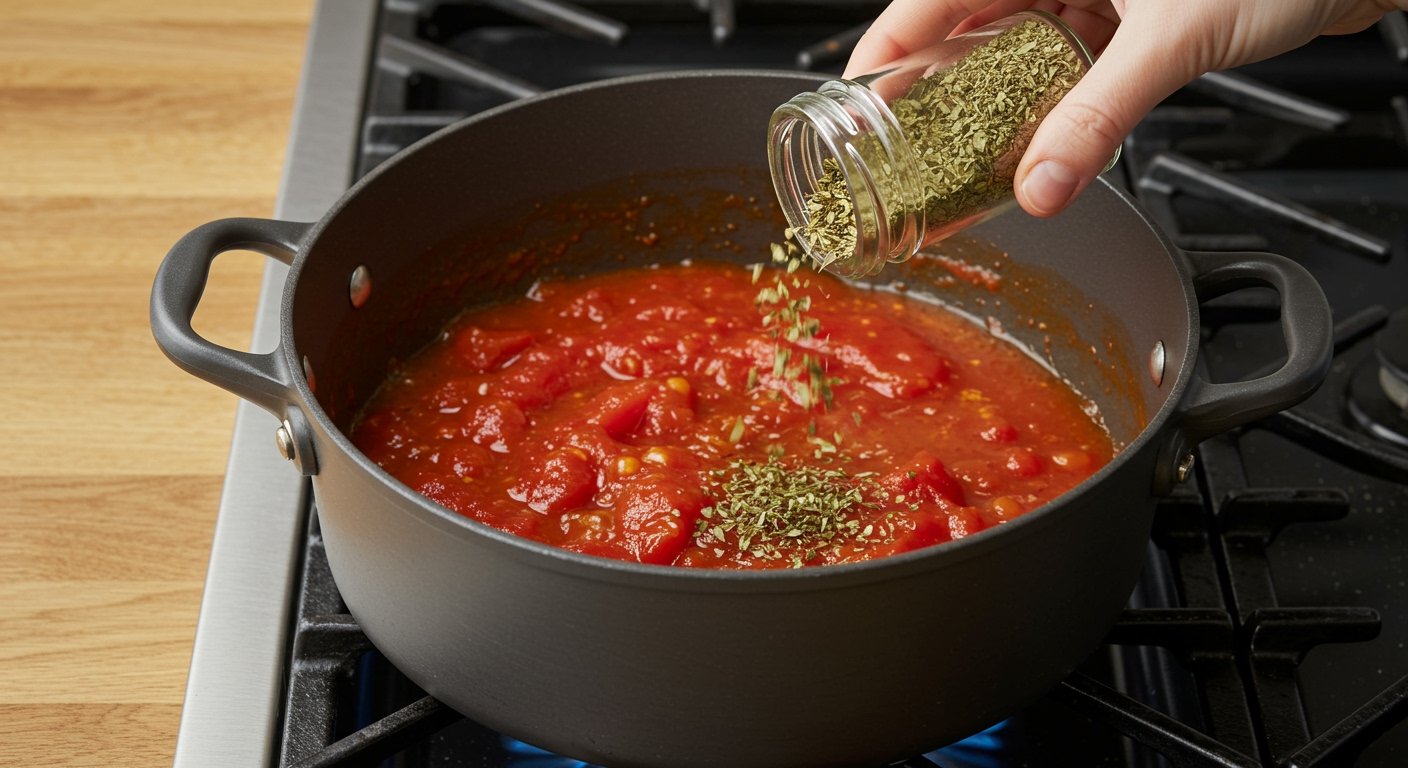
Do Dried Herbs Lose Their Flavor?
Yes, dried herbs do lose their flavor over time. While `shelf life fresh vs dried herbs` heavily favors dried herbs, their potency isn’t eternal. Fresh herbs typically last for 1-3 weeks when stored properly. Dried herbs can last for up to a year or more, but their flavor may start to diminish significantly after about three to six months. [Data 2, 3]
Storing dried herbs in airtight containers away from heat, light, and moisture helps preserve their flavor for longer. You can often tell if a dried herb has lost its potency by rubbing a small amount between your fingers; if you don’t smell a strong aroma, it’s likely past its prime.
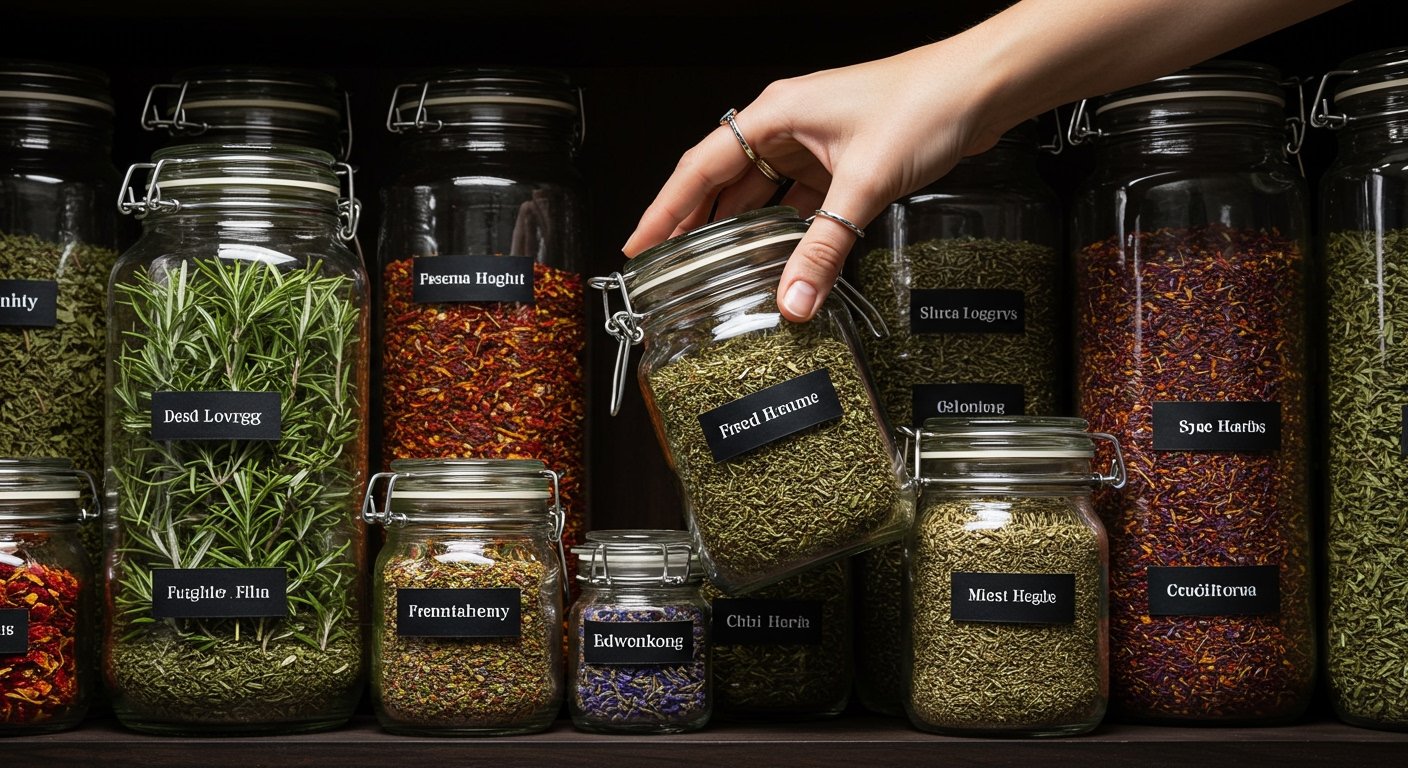
Nutritional Aspects: A Closer Look
Both fresh and dried herbs offer nutritional benefits, often rich in antioxidants and other beneficial compounds. Fresh herbs, such as parsley, coriander, rosemary, and thyme, often have higher levels of polyphenols per gram than their dried counterparts. [Data 3] Polyphenols are powerful antioxidants that contribute to overall health. [5]
However, some studies indicate higher iron levels in dried basil and mint compared to fresh, while vitamin C levels may be lower once dried. [Data 3, 8] Ultimately, incorporating a variety of both fresh and dried herbs into your diet is beneficial for enhancing flavor and boosting nutritional intake. Herbs can even help you reduce the need for excess salt and fat in cooking! [11]
Understanding the Dried Herbs Market
The popularity of dried herbs continues to grow globally. The global dried herbs market size was valued at USD 2.25 billion in 2024 and is projected to reach USD 3.53 billion by 2032, exhibiting a Compound Annual Growth Rate (CAGR) of 5.40% during the forecast period of 2025 to 2032. [Data 4] This growth highlights the convenience and enduring appeal of dried herbs in kitchens worldwide. Another estimate places the global dried herbs market size at USD 2.39 billion in 2025, anticipated to increase to USD 3.88 billion by 2034, with a CAGR of 5.5% from 2025 to 2034. [Data 4]
Practical Tips for `Using Fresh Herbs in Recipes`
When `substituting fresh for dried herbs`, always consider the dish’s cooking time and the herb’s characteristic. Here’s a quick `dried herbs conversion chart` and some additional advice:
- General Conversion: 1 tablespoon fresh herbs = 1 teaspoon dried herbs (this aligns with the 3:1 fresh to dried ratio, as 3 teaspoons = 1 tablespoon).
- Finishing Touches: For delicate herbs like parsley, cilantro, dill, or chives, always opt for fresh when possible, especially for garnishes or cold dishes. Add them right before serving.
- Hearty Herbs: Rosemary, thyme, oregano, and marjoram hold up well to drying and long cooking times. Use them early in stews, roasts, or sauces. `Fresh vs dried oregano` works well for a deeper flavor in cooked dishes. [4]
- Taste as You Go: When in doubt, start with less dried herb than the conversion suggests and add more to taste. It’s easier to add than to remove!
- Rehydrating Dried Herbs: For some recipes, especially those without much liquid, you can rehydrate dried herbs by soaking them in a little warm water or oil for 5-10 minutes before adding them to your dish. This helps them release their flavors more effectively.
Learning to effectively use both fresh and dried herbs will significantly enhance your meal prepping skills (Ultimate Guide to Meal Prepping for Beginners) and elevate your everyday cooking, even for quick weeknight dinners (25 Easy Weeknight Dinners Under 30 Minutes).
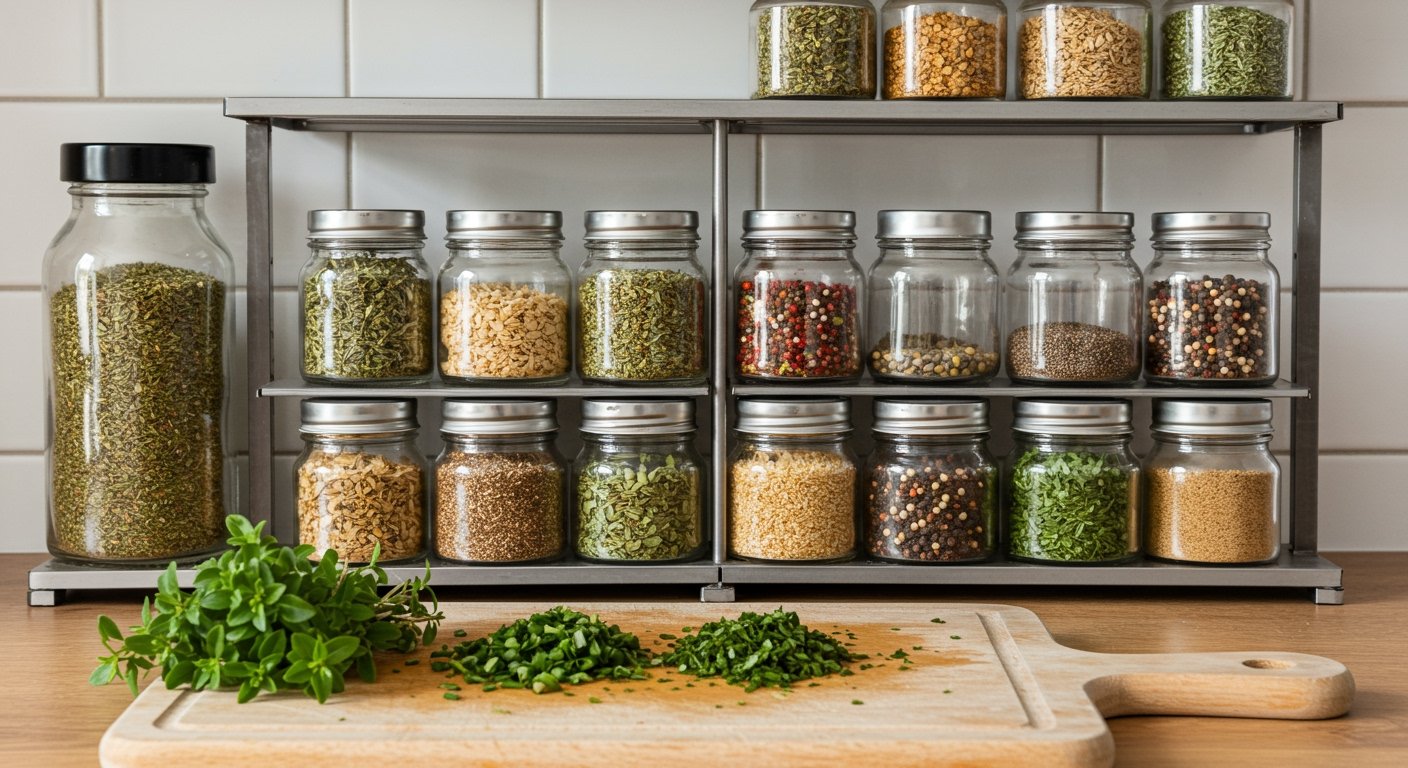
Conclusion
The choice between fresh and dried herbs isn’t about one being superior to the other; it’s about understanding their unique properties and knowing `which herbs are better fresh, and which are better dried` for specific culinary applications. Fresh herbs bring brightness and delicate notes, ideal for finishing dishes and uncooked preparations. Dried herbs offer concentrated, robust flavors that stand up to longer cooking times. By mastering the `fresh herb to dried herb ratio` and understanding `cooking with fresh vs dried herbs`, you’ll confidently create dishes that burst with flavor, whether you’re using a vibrant bouquet from your garden or a trusty jar from your pantry.
Frequently Asked Questions
What is the general conversion ratio when substituting fresh herbs for dried herbs?
Dried herbs are generally three times more concentrated than fresh herbs. So, if a recipe calls for 1 tablespoon of fresh herbs, you would use 1 teaspoon of dried herbs.
When is it best to use fresh herbs in a recipe?
Fresh herbs are best used in cold dishes like salads, pesto, or as a garnish. They should be added at the very end of the cooking process to preserve their delicate flavors and aromas.
When should I use dried herbs in my cooking?
Dried herbs are ideal for cooked dishes like soups, stews, sauces, and casseroles. Their concentrated flavors benefit from longer cooking times, so it’s best to add them earlier in the cooking process.
Do dried herbs lose their flavor over time?
Yes, while dried herbs have a much longer shelf life than fresh herbs (up to a year or more), their flavor potency can start to diminish after about three to six months. Store them in airtight containers away from heat and light to maximize their shelf life.
Which herbs are generally better fresh, and which are better dried?
Herbs like basil, cilantro, parsley, chives, and mint are generally preferred fresh due to their delicate, volatile flavors. Heartier herbs such as oregano, thyme, rosemary, and bay leaf retain their robust flavors well when dried and are excellent for cooked dishes.
